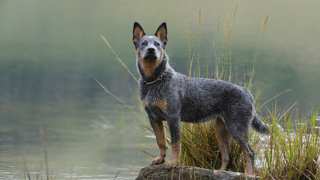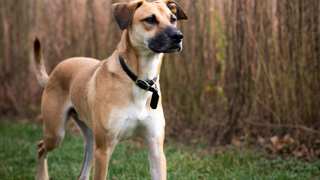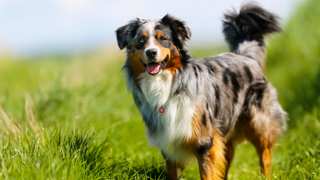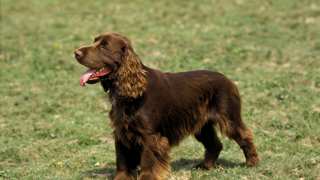These dogs are high-energy, so Brittany exercise requirements are pretty extensive overall. Breed members are best suited for active families who are "high-energy" themselves, because these dogs will require require frequent activities that condition them physically (walking, jogging, fetch) and stimulate them mentally (games, canine sports). Brittanys make good bicycling companions as well.
The typical adult Brittany, depending on its age and overall activity level, will need an hour of proper exercise per day at the very least--and most will be able to handle much more than that! ("Couch potato" owners will definitely need to find another breed, for obvious reasons.) You can start exercising your Brittany puppy at three months of age by taking it on short (5- to 7-minute) walks, then you can increase the walks' length and frequency as the puppy matures. And these early walks are a good opportunity to start teaching your young Brittany obedience, through leash training: have the pup walk beside or behind you on the leash instead of being allowed to lead or "tug" on it. This, in the puppy's mind, establishes you as the leader, and should make training easier as the dog matures.
A few things to keep in mind when exercising your Brittany: first, puppies younger than nine months old shouldn't participate in activities that include a lot of jumping, running on hard surfaces, or navigating of stairs, as doing so can injure their still-developing joints and bones. And regardless of age, all Brittany dogs will definitely need to be leashed when in public. These dogs are lively, friendly, and curious, and as hunters they have a naturally high drive--and that combination of traits means they'll instantly run off after small animals or other interesting sights/sounds unless controlled by a leash. Even when exercising in your own yard, the area will need to be securely fenced to keep the dog from running away. And finally: Brittanys are sensitive and needy, and will quickly suffer separation anxiety if left alone, so they'll respond much better to exercise they do together with their people.
Precautions aside, exercising your Brittany every single day is a must. Since they were developed to be active hunting dogs, breed members are used to frequent physical activity--and without it they'll turn destructive, disobedient, and thoroughly unhappy in general. Consistent exercise will be great for both the dog's and your own peace of mind! Here are a few Brittany exercise ideas:
- Walking/Jogging/Bicycling: Two 30-minute walks (or 20-minute jogs or bike rides) per day is a good target
- Fetch/Frisbee: Brittanys love chasing a ball, stick, or Frisbee
- Hide-and-Seek: Good indoor, rainy-day activity; give the dog a treat when it finds you
- Canine Sports: These dogs can excel at obedience and agility trials, flyball, and other events
- Dog Park: If properly socialized, Brittanys enjoy the company of other dogs
- Hiking: Excellent bonding activity' bonus if you can find a remote area where the dog can be off-leash
When indoors, it's a good idea to give your Brittany access to one or more balls or chew-toys that will allow the dog to burn excess energy--which it'll undoubtedly have plenty of! It's also recommended that you establish a regular exercise schedule for the dog, such as walks, jogs, or bike rides after breakfast and dinner and a play period in the afternoon.







